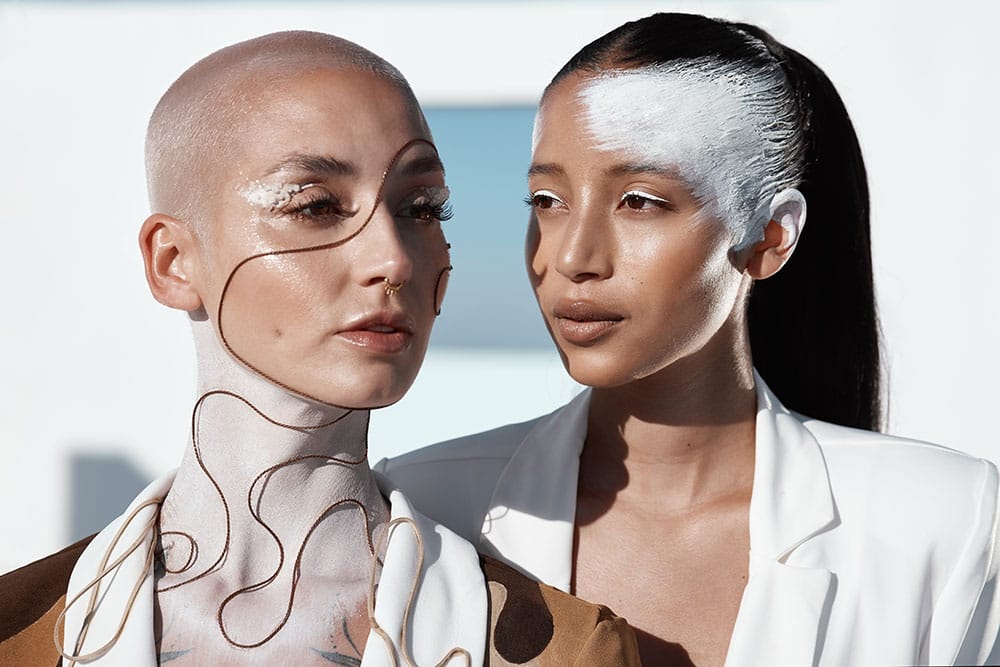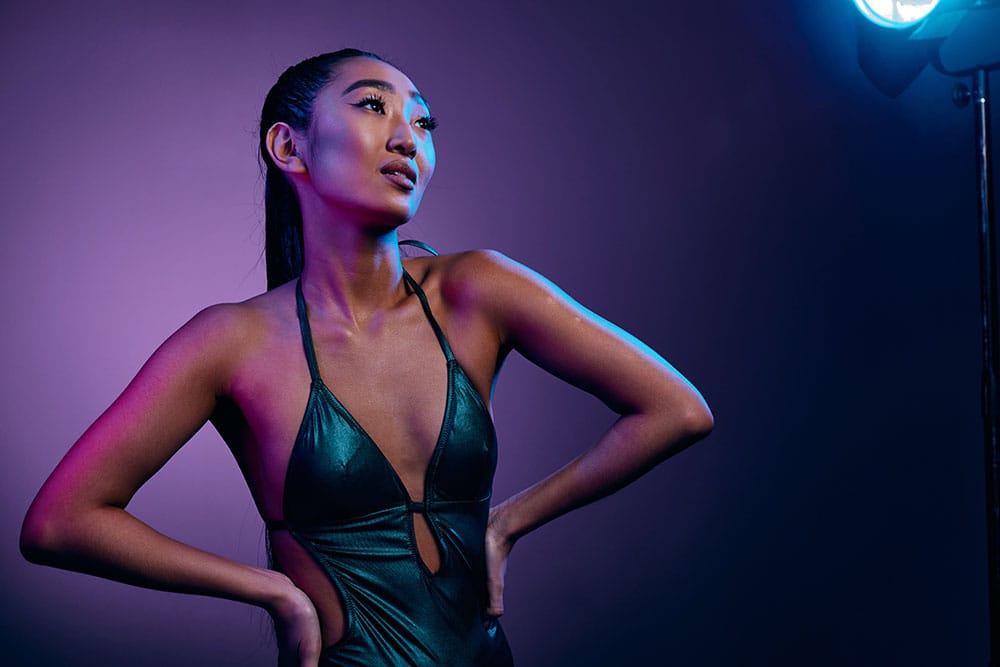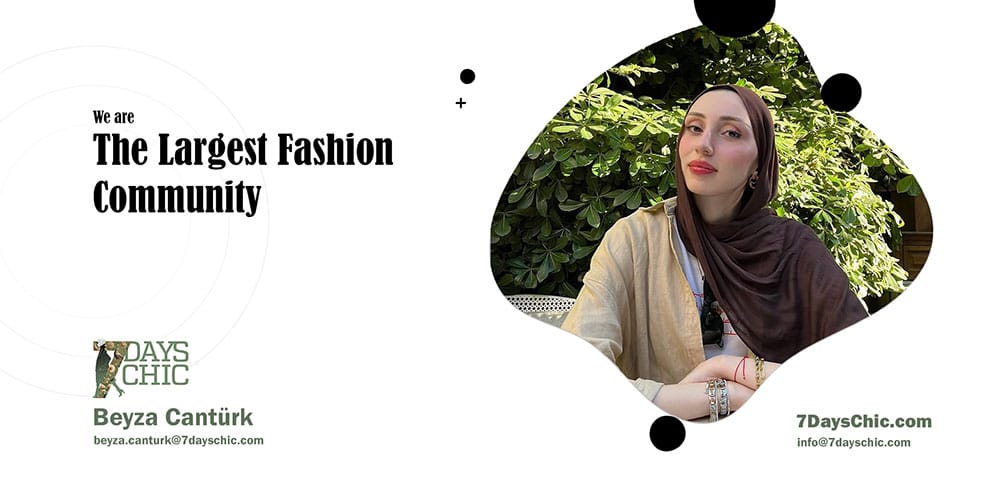Building an Online Portfolio:
1. Using Modeling Platforms
Creating an online portfolio is crucial for models looking to attract clients and agencies. Several modeling platforms can help models showcase their work effectively:
- Model Mayhem: This platform allows models to create profiles featuring their portfolios, experience, and contact information. Models can connect with photographers and other industry professionals, facilitating collaborations that enhance their portfolios. Regularly updating profiles with new images and experiences is essential to keep the portfolio relevant.
- Behance: While primarily used by creative professionals, Behance provides a platform for models to showcase their portfolios visually. By presenting high-quality images and engaging project descriptions, models can attract attention from potential clients and agencies.
- Personal Website: Having a personal website can further enhance a model’s online presence. A website allows for more control over branding, layout, and content. Models can include their portfolios, comp cards, contact information, and a blog to share insights about their careers and the industry.
2. Attracting Clients and Agencies
An effective online portfolio not only showcases a model’s work but also serves as a marketing tool to attract clients and agencies. Here are some strategies to maximize the impact of an online portfolio:
- Professional Quality: High-quality images are crucial. Models should invest in professional photoshoots to create striking images that showcase their versatility and range. Diverse shots, including headshots, full-body shots, and commercial looks, are essential to appeal to various clients.
- SEO Optimization: Optimizing online profiles and websites for search engines can increase visibility. Models should use relevant keywords in their profiles and descriptions to help potential clients find them easily. Additionally, sharing content on social media can drive traffic to their portfolios.
- Consistent Branding: Maintaining consistent branding across social media and online portfolios is vital. This includes using similar profile pictures, bios, and aesthetics that reflect the model’s personal style and image. Consistency helps build recognition and reinforces the model’s brand identity.
In conclusion, leveraging social media and online platforms is crucial for aspiring models looking to promote their brand and build successful careers. By utilizing platforms like Instagram, TikTok, and YouTube, models can gain exposure, engage with their audience, and connect with industry professionals. Additionally, building an online portfolio through dedicated modeling platforms and personal websites allows models to showcase their work effectively, attracting clients and agencies. As the modeling industry continues to evolve, a strong online presence will be essential for those seeking to thrive in this competitive field.
10. Monetizing Your Modeling Career

Once a model has established a solid portfolio and developed their personal brand, the next key step is turning that visibility into income. Monetizing a modeling career requires a strategic approach to finding paid gigs, securing collaborations with brands, and diversifying income streams. As the industry evolves, models today have more opportunities than ever to capitalize on their skills, presence, and audience. Below is an in-depth look at various ways to monetize a modeling career, including working with agencies, collaborating with brands, and exploring new avenues for generating income.
Finding Paid Gigs and Collaborations:
1. Working with Agencies
For many models, securing representation through a reputable agency is one of the most reliable ways to find consistent, paid work. Agencies act as intermediaries between models and potential clients, offering access to larger and more prestigious opportunities that may not be available to freelancers. Models who sign with agencies benefit from the following:
- Access to High-Profile Jobs: Agencies often have connections with major brands, designers, and production companies, enabling models to secure jobs in high-profile campaigns, runway shows, or commercial shoots.
- Negotiating Contracts: Agencies handle the business side of modeling, negotiating contracts and ensuring that models are paid fairly for their work. This takes the pressure off models, allowing them to focus on their craft.
- Career Guidance: Beyond finding jobs, many agencies provide career management services, helping models make strategic decisions to advance their careers. This might include guidance on which gigs to accept or how to expand into new markets.
However, working with an agency is not the only path to success. Many models operate as freelancers, particularly in the age of digital platforms, where models can independently secure jobs through networking, social media, or online casting platforms. Freelance modeling requires a proactive approach, as models need to be constantly marketing themselves, reaching out to clients, and building relationships within the industry.
2. Securing Freelance Jobs
For those who prefer freelancing, or for those who are still building agency representation, platforms like Model Mayhem, Casting Networks, and Upwork can provide a steady stream of opportunities. Here’s how freelancers can secure paid gigs:
- Networking: Establishing connections with photographers, makeup artists, and stylists can lead to recommendations and job offers. Models should attend industry events, castings, and open calls to meet potential collaborators.
- Self-Promotion: Models must actively promote their work through their personal websites, social media accounts, and modeling portfolios. Keeping profiles updated with new, professional-quality images is essential to attract attention from clients.
By diversifying between agency-represented jobs and freelance opportunities, models can maximize their income potential while maintaining flexibility in their careers.
Brand Collaborations and Sponsorships:
1. Working with Fashion Brands
Brand collaborations and sponsorships have become lucrative avenues for models looking to monetize their presence, especially those with a strong online following. Many fashion, beauty, and lifestyle brands look to models to promote their products, either through traditional photo shoots or via social media collaborations.
- Social Media Partnerships: Models can collaborate with brands to create sponsored content, where they feature products in their posts, Reels, or TikToks. These collaborations are often highly compensated, especially if a model has a large or highly engaged audience. Payment can range from free products to significant sums, depending on the model’s reach.
- Ambassador Roles: Many brands also offer ambassador or sponsorship opportunities. In these roles, models become the face of a brand or campaign, often signing contracts that ensure long-term partnerships. Ambassadors are typically expected to post regularly about the brand, attend events, and incorporate the brand’s products into their personal content.
2. Collaborating with Influencers

With the rise of influencer marketing, models also have opportunities to collaborate with influencers in adjacent industries such as fitness, wellness, or travel. These partnerships allow models to expand their audience while gaining exposure to new markets. Influencer collaborations might include joint photo shoots, product launches, or digital campaigns.
Diversifying Income Streams:
1. Launching Merchandise or Products
In addition to traditional modeling jobs, models can create their own income streams by launching products or merchandise that align with their personal brand. Some successful models have launched clothing lines, beauty products, or accessories that reflect their style and appeal to their audience. For example:
- Personalized Merchandise: Models can create branded merchandise, such as clothing or accessories featuring their logo, name, or signature style. This can be sold through personal websites or platforms like Etsy and Shopify.
- Beauty or Fashion Products: Models with a strong presence in beauty or fashion might explore opportunities to launch their own product lines. This could include anything from makeup collections to skincare products, leveraging their personal expertise and influence to create a profitable business.
2. Content Creation
Many models are now branching into content creation as a way to diversify their income. This could include launching a YouTube channel, where they provide modeling tips, behind-the-scenes looks at their work, or fashion advice. Platforms like Patreon allow models to offer exclusive content to paying subscribers, creating a recurring revenue stream.
- Online Courses or Workshops: Models with extensive experience can also create online courses or workshops, teaching aspiring models how to succeed in the industry. Offering personal coaching, portfolio reviews, or posing lessons can attract aspiring models looking for guidance.
3. Passive Income Ideas
Lastly, models can explore passive income options, such as investing in digital products like e-books, tutorials, or even photography presets that they can sell online. Models can also monetize their social media by allowing ads on their content, creating an additional stream of passive revenue.
In conclusion, monetizing a modeling career involves a mix of traditional and modern strategies. Models who work with agencies or as freelancers must actively seek out paid gigs while building relationships within the industry. Brand collaborations and sponsorships present lucrative opportunities, especially for models with strong social media followings. By diversifying income streams through merchandise, content creation, and passive income ideas, models can maximize their earning potential and create a sustainable, successful career in the competitive world of modeling.
11. The Future of Modeling

Impact of Technology and Social Media
The modeling industry has evolved dramatically with the rise of technology and social media, reshaping how models are discovered, how campaigns are executed, and how brands connect with their audiences. One of the most notable shifts is the emergence of virtual modeling and digital influencers, who are created entirely through CGI (computer-generated imagery). These virtual models, such as Lil Miquela, have millions of followers and work with luxury brands, challenging the traditional role of human models in fashion and marketing. The integration of Al (artificial intelligence), VR (virtual reality), and AR (augmented reality) technologies is expanding the creative boundaries of the industry, enabling fully immersive experiences for audiences. Brands are now using virtual try-ons, AR-powered fashion shows, and Al-driven campaigns, offering more interactive ways to engage consumers.
These technologies not only revolutionize the creative process but also broaden the scope of the modeling profession. Models today must adapt to a tech-savvy environment, where virtual worlds and social media interactions hold significant value. Social media platforms like Instagram and TikTok have empowered models to cultivate personal brands independently, giving them direct access to millions of potential followers and opportunities for brand partnerships. Self-promotion on these platforms has become an essential part of the modern modeling career.
Sustainability and Inclusivity Trends
As awareness of sustainability grows, the fashion industry-including modeling-has been shifting toward more ethical practices. Sustainability is now a key focus, with brands adopting eco-friendly materials and production methods to reduce their environmental impact. Models are increasingly being featured in campaigns that promote ethical fashion, showcasing clothing made from recycled materials or participating in slow fashion initiatives. The future of modeling will likely see more emphasis on working with brands that prioritize sustainability, and models may even become ambassadors for environmental causes.
In addition to sustainability, inclusivity is shaping the future of the modeling world. The rise of body-positive campaigns and increased representation of diverse body types, ethnicities, and genders reflects a shift in societal values toward inclusivity and acceptance. Brands and agencies are recognizing the importance of representing a broader range of beauty standards, moving away from the rigid, often unattainable ideals of the past. This inclusivity extends beyond just size; it encompasses age, disability, and gender diversity, with more campaigns embracing individuals who reflect the real world’s diversity. Models who embody these values and represent diverse identities will find growing opportunities in an industry that is committed to becoming more inclusive and reflective of modern society.
In conclusion, the future of modeling will be shaped by a combination of technological advances, ethical considerations, and a commitment to diversity. Models who can adapt to the digital landscape and align themselves with sustainability and inclusivity movements will thrive in this evolving industry.
12. Additional Resources for Aspiring Models

Case Studies: Successful Modeling Careers
Studying the career paths of iconic models is a valuable resource for aspiring models seeking inspiration and guidance. Models like Naomi Campbell, Gisele Bündchen, and Kendall Jenner have carved out extraordinary careers by adapting to industry changes and leveraging their unique skills. For example, Naomi Campbell’s longevity in the fashion world, from dominating the runway to her philanthropic work, showcases how a model can evolve and expand her influence beyond modeling. Gisele Bündchen’s ability to transition from supermodel to businesswoman, capitalizing on her personal brand, highlights the importance of long-term career strategy. Kendall Jenner, who entered the industry at a young age, built her modeling career while balancing her public persona, demonstrating how to effectively manage fame and maintain a successful career.
By analyzing the journeys of these successful figures, aspiring models can gain insight into key decisions that can shape a modeling career. They can learn about the importance of versatility, strategic networking, and branding, all of which are essential in navigating the complex landscape of the fashion world.
Industry Reports and Statistics
Another essential resource for aspiring models is industry reports and statistical data. These resources provide a deep dive into current trends, the demand for different types of models, and emerging opportunities. For instance, recent reports highlight the growing demand for plus-size and diverse models, driven byconsumers’ increasing preference for inclusivity in advertising and fashion. Understanding where the industry is heading can help models position themselves for success by aligning their portfolios with current trends.
Additionally, industry reports can offer insights into global markets, such as which countries or regions are experiencing growth in fashion and modeling opportunities.
For example, reports often show that Asia and Eastern Europe are expanding markets, providing new opportunities for models willing to travel and adapt to different cultural aesthetics. Staying informed about such developments can guide aspiring models on where to focus their efforts and potentially target agencies and markets that match their profiles.
Expert Interviews and Insights
Hearing directly from professionals within the industry, such as successful models, agents, and photographers, is invaluable for those new to modeling. Expert interviews can provide advice on navigating challenges such as casting rejections, maintaining a balanced lifestyle, and advancing one’s career. Industry professionals often share insights on what agencies look for in new models, how to stand out at casting calls, and tips for long-term career sustainability.
For example, top agents often advise aspiring models to focus on building strong portfolios and developing their personal brands early on. Photographers might emphasize the importance of being comfortable in front of the camera and the ability to take direction well. These interviews offer real-world perspectives that can’t be found in textbooks or articles, giving aspiring models a glimpse into the realities of the industry and how to succeed in it.
13. Conclusion

The path to a successful modeling career is a journey that requires more than just good looks-it demands strategy, resilience, and adaptability. From understanding the fundamentals of the modeling industry to building a strong portfolio, networking with the right professionals, and staying on top of industry trends, every step in a model’s journey plays a crucial role in shaping their future.
Technology and social media have opened new doors, allowing models to take more control over their careers by building personal brands and leveraging online platforms. Meanwhile, the industry’s growing focus on sustainability and inclusivity presents new opportunities for models who embody these values. By using available resources, such as case studies, industry reports, and expert advice, aspiring models can navigate the complexities of this ever-evolving field and carve out their own unique paths to success.
Ultimately, success in modeling is about persistence, professionalism, and staying true to one’s personal brand while adapting to the dynamic landscape of the fashion world. By understanding and applying the insights shared in this guide, aspiring models can set themselves up for a rewarding career in a competitive but ever-expanding industry.
Continue Reading:
How to Become a Model: A Step-by-Step Guide / Part 1
How to Become a Model: A Step-by-Step Guide / Part 2
How to Become a Model: A Step-by-Step Guide / Part 3
How to Become a Model: A Step-by-Step Guide / Part 4
How to Become a Model: A Step-by-Step Guide / Part 5
Written by: Beyza Cantürk




Add a Comment